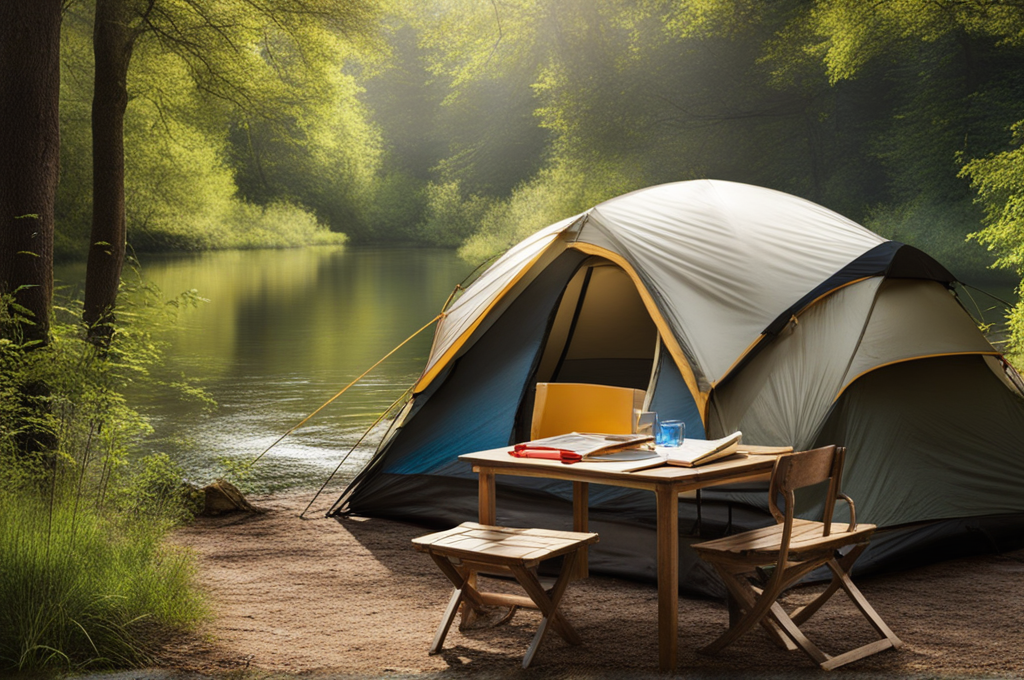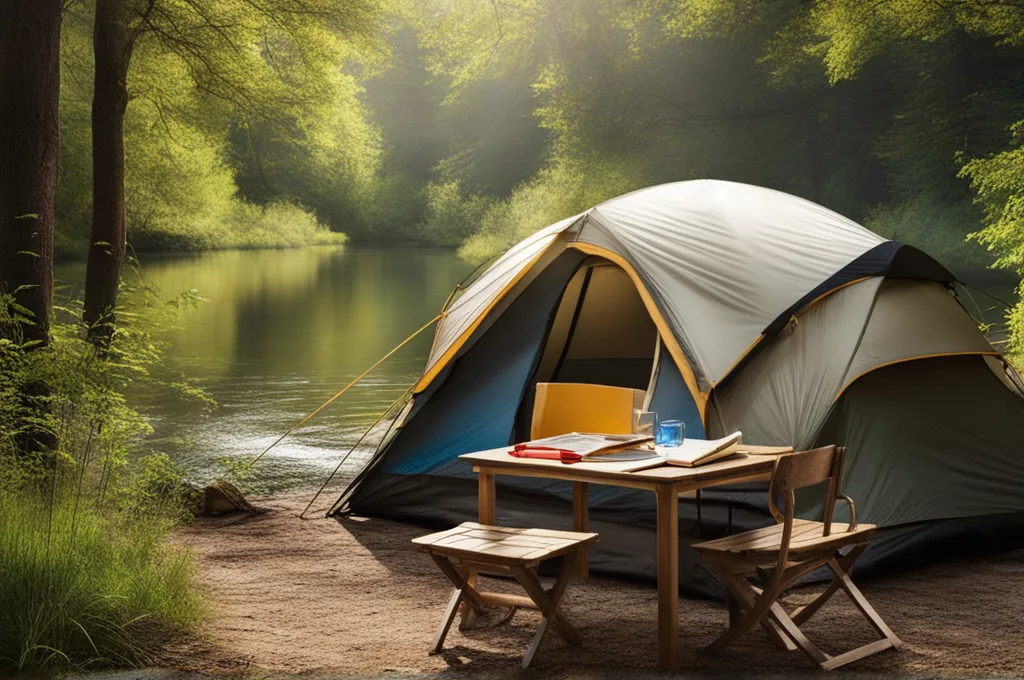
The gentle gurgle of water against stones, the rustle of leaves in the breeze, and the sound of nightfall — these are just some of the delightful noises you’ll hear as you drift off to sleep during a riverside camping trip.
What to Know Before You Go
Before you pack your bags and embark on this delightful adventure, there are some essential points to consider.
1. Choose Your Spot Wisely
First off, choose a spot that aligns with your comfort level. Consider your preferences and requirements — do you prefer a sandy beach, a rocky shore, or a peaceful bend in a river?
Peaceful riverside camping often involves a quiet spot where you can hear the gentle lullaby of the river flowing past.
2. Time Your Trip Right
Timing is everything, especially when it comes to camping. Plan your trip during the low-water season if possible. This means looking up the water level before you set out. This way, you can ensure you have enough space to pitch your tent without the need for a crane!
3. Understand the Landscape
Before you pitch your tent, learn the lay of the land. Is there any rocky outcrop or a steep bank that you need to be aware of?
4. Bring a Water Filter or Purifier
Always have a water filter or purifier with you. The water might look pristine, but it’s vital to ensure that your drinking water is safe. This might seem like an extra step, but it could save you from an unpleasant bout of gastrointestinal illness.
Finding the Perfect Campsite
Now that you know what to look for, let’s dive into the specifics of where to find the perfect spot.
1. Look for Privacy
Privacy is key when camping. You want to ensure that you have a spot that will allow you to relax and unwind without feeling like everyone is watching you.
2. Consider the View
Choose a spot that offers a breathtaking view of the river. Watching the sunset over the river as it flows past is an experience you won’t forget.
3. Check for Wildlife
Look for signs of wildlife. Is there any wildlife that frequents the area? A river is a natural habitat for many animals, and seeing them can be an amazing experience.
4. Look for a Flat Spot**
Select a spot that’s flat and level. This will make it easier for you to set up your tent. It’s much harder to set up a tent on uneven ground, and it can be dangerous if it starts to tip over in the wind.
Setting Up Your Tent
Once you’ve found the perfect spot, it’s time to set up your tent. Here are some tips to make the process easier and more enjoyable.
1. Use a Stakes
Using stakes is a great way to secure your tent. Make sure to use enough of them so that your tent is secure and stable.
2. Use a Guy Rope
A guy rope can help you secure your tent to the ground. This will keep it from blowing away in the wind.
3. Use a Tarp
A tarp can be a great addition to your tent. It can protect you from the rain or the sun, and it can also help you create a more sheltered space.
Creating a Comfy Camping Experience
Once you’ve set up your tent, it’s time to make your camping experience as comfortable as possible.
1. Choose the Right Sleeping Bag
Choosing the right sleeping bag is important. You want to make sure that you’re comfortable and warm during the night.
2. Create a Comfy Bed
Create a comfy bed by placing a sleeping pad or air mattress under your sleeping bag. This will help keep you off the ground and provide a more comfortable place to sleep.
3. Create a Campfire
A campfire can be a great addition to your camping experience. It can provide heat, light, and a cozy atmosphere. Just make sure to follow the rules and keep it away from your tent.
4. Bring a Lantern
A lantern can be a great addition to your camping experience. It can provide light in your tent and around your campsite.
Riverside camping is an incredible way to connect with nature. It’s a unique experience that can be enjoyed by people of all ages. Just remember to do your research and be prepared before you go. With the right preparation and the right mindset, you’ll have a wonderful time.
Happy camping!
